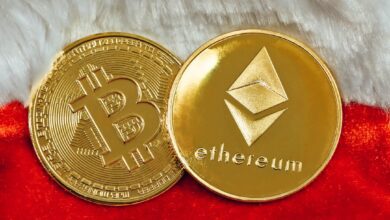Golden Refuge: The Impact of Geopolitical Tensions on Demand and Prices

In an increasingly interconnected world, geopolitical tensions have emerged as a significant force shaping financial markets, with gold standing out as a traditional safe haven asset. As uncertainties loom—be it through international conflicts, economic sanctions, or diplomatic standoffs—investors often flock to gold, viewing it as a shield against volatility. This article delves into the intricate relationship between geopolitical dynamics and gold demand, exploring how crises and conflicts influence investor behavior and, ultimately, gold prices. We will examine the psychology behind gold's appeal in times of turmoil, analyze the ripple effects of global events on gold markets, and reflect on historical trends that highlight the correlation between geopolitical events and price fluctuations. By unpacking these themes, we aim to provide a comprehensive understanding of why gold remains a vital asset in an era marked by uncertainty.
- 1. "Gold as a Safe Haven: Understanding Investor Behavior Amidst Geopolitical Uncertainty"
- 2. "The Ripple Effect: How Global Conflicts and Policies Shape Gold Markets"
- 3. "Historical Trends: Analyzing the Correlation Between Geopolitical Events and Gold Prices"
1. "Gold as a Safe Haven: Understanding Investor Behavior Amidst Geopolitical Uncertainty"
In times of geopolitical uncertainty, investors often seek refuge in assets that have historically been viewed as safe havens, with gold standing out as a prominent choice. The metal's intrinsic value, scarcity, and universal recognition as a form of currency make it a preferred option during turbulent times. When political tensions escalate—whether due to conflicts, trade wars, or diplomatic strains—market volatility typically increases, prompting investors to reassess their portfolios.
Gold's appeal during such crises can be attributed to its ability to retain value when fiat currencies are under pressure or when stock markets exhibit instability. For instance, during periods of heightened tension, such as the U.S.-China trade disputes or military conflicts in various regions, investors may flock to gold, driving up its demand and consequently its price. This behavior is often fueled by the psychological aspect of investing; the fear of loss can lead to herd behavior, where many investors sell off riskier assets and simultaneously move their capital into gold.
Moreover, gold is viewed as a hedge against inflation, which can often accompany geopolitical strife. As governments may respond to crises by increasing spending or implementing stimulus measures, the potential for inflation can rise, leading investors to seek out gold as a protective measure. This dual role of gold—as both a safe haven and an inflation hedge—reinforces its status among investors during uncertain times.
Additionally, central banks often increase their gold reserves amidst geopolitical tensions to safeguard their economies, further driving demand. This institutional backing adds an extra layer of stability to gold prices, as central banks are seen as long-term players in the market, capable of influencing global supply and demand dynamics.
Overall, the interplay between geopolitical uncertainty and investor behavior underscores gold's enduring allure. As tensions arise, the metal's role as a safe haven is reaffirmed, reinforcing its position as a critical component of a diversified investment strategy during challenging times.
2. "The Ripple Effect: How Global Conflicts and Policies Shape Gold Markets"
Geopolitical tensions often create a ripple effect that profoundly influences gold markets. When conflicts arise—whether through military engagements, trade disputes, or diplomatic standoffs—investors typically seek refuge in gold, viewing it as a safe-haven asset. This behavior stems from gold's historical role as a store of value and a hedge against economic instability. As uncertainty escalates, demand for gold typically surges, driving up its price.
For instance, during periods of heightened geopolitical strife, such as the ongoing tensions in the Middle East or the Ukraine-Russia conflict, market volatility tends to increase. Investors, fearing the potential for regional instability to impact global economies, often pivot towards gold. This shift not only reflects immediate concerns about the conflict itself but also broader worries about inflation, currency fluctuations, and potential recessionary pressures that may follow.
Moreover, government policies can exacerbate these dynamics. Central banks may adjust their monetary policies in response to geopolitical developments, impacting interest rates and currency values. For example, if a central bank lowers interest rates to stimulate the economy amid a geopolitical crisis, the opportunity cost of holding non-yielding assets like gold diminishes, further bolstering its attractiveness. Conversely, if tensions lead to a tightening of monetary policy to control inflation, the initial surge in gold prices might be tempered as investors reassess their positions.
Additionally, sanctions and trade restrictions can disrupt supply chains and alter the availability of gold in various markets. Countries under sanctions may seek to bolster their gold reserves to circumvent economic isolation, leading to increased buying pressure. Similarly, if a major gold-producing nation faces conflict or political instability, it could hinder production and exports, tightening supply and driving prices higher.
In summary, the interplay between global conflicts and policy responses creates a complex landscape for gold markets. As geopolitical tensions evolve, they engender a cycle of demand and price adjustments, reflecting the intricate relationships between security concerns, economic indicators, and investor sentiment.
3. "Historical Trends: Analyzing the Correlation Between Geopolitical Events and Gold Prices"
Throughout history, gold has been viewed as a safe-haven asset, particularly during periods of geopolitical unrest. An analysis of historical trends reveals a consistent correlation between significant geopolitical events and fluctuations in gold prices. For instance, during the Gulf War in the early 1990s, gold prices surged as investors sought refuge from uncertainty in the global markets. Similarly, the September 11 attacks in 2001 triggered a sharp increase in gold demand, reflecting widespread fears of instability and economic disruption.
The global financial crisis of 2008 further exemplifies this phenomenon. As confidence in financial institutions plummeted, gold prices soared to record highs, driven by investors' desire to protect their wealth against potential systemic failures. The ensuing economic turmoil led to increased geopolitical tensions, which further fueled demand for gold as a hedge against uncertainty.
In more recent years, events such as the annexation of Crimea by Russia in 2014 and escalating trade tensions between the United States and China have once again underscored gold's role as a strategic asset. During these periods, gold prices experienced notable spikes, driven by fears of economic repercussions and geopolitical escalations.
Moreover, the COVID-19 pandemic introduced a unique layer of complexity. While primarily a health crisis, the pandemic also exacerbated existing geopolitical tensions and led to unprecedented monetary policy responses globally. In this environment, gold emerged as a preferred investment, with prices reaching historic highs in 2020 as investors sought safety amidst uncertainty.
These historical patterns illustrate that geopolitical events, whether military conflicts, political upheaval, or economic crises, typically lead to heightened demand for gold, resulting in price increases. As global tensions continue to evolve, the interplay between geopolitical developments and gold prices remains a critical area of focus for investors and analysts alike. Understanding these historical correlations can provide valuable insights for predicting future trends in the gold market, particularly in times of uncertainty.





